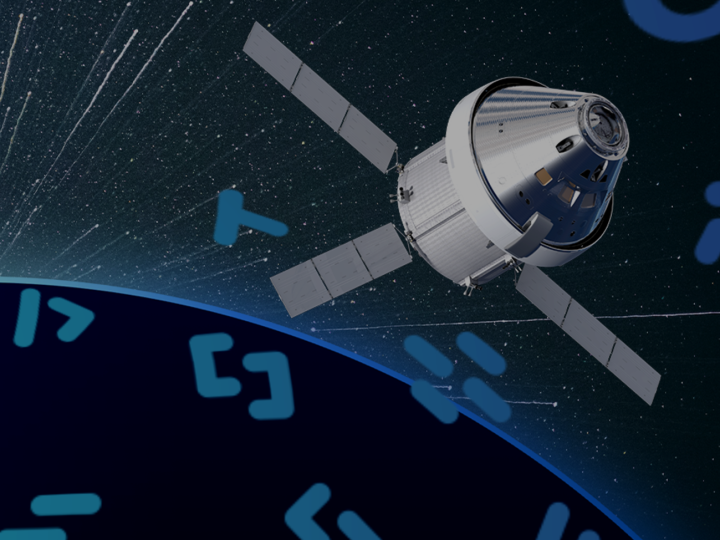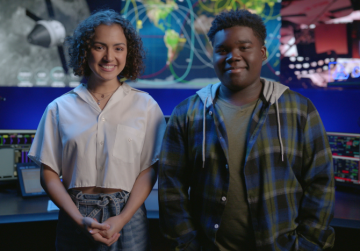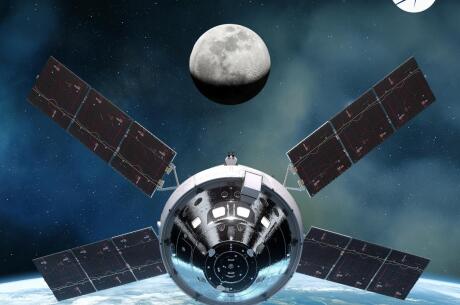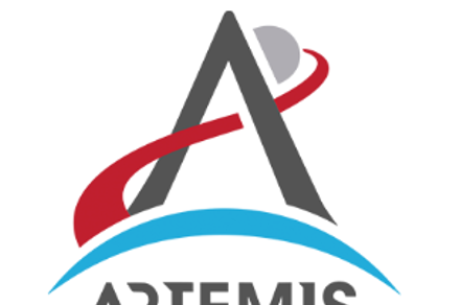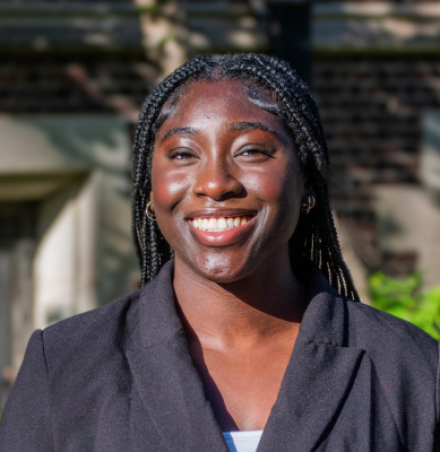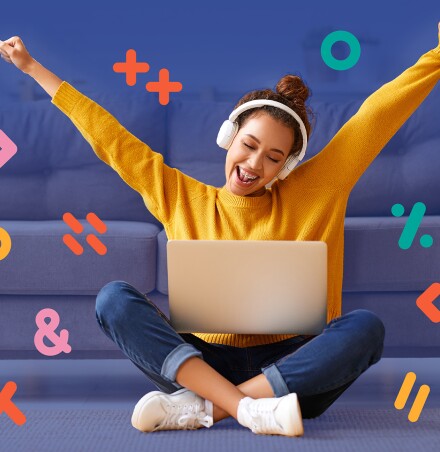Callisto: Space Innovation Tour
Come aboard the Orion spacecraft and discover the inner workings of new, special space technology that flew to the Moon during NASA’s Artemis I flight test.
0:00 / 0:00
Video Companion

Students gain exposure to the careers of the future as they discover how engineers are using science to bring voice artificial intelligence (Amazon’s Alexa), video conferencing, telemetry, and more to deep space during NASA’s Artemis I flight test.
On the tour, students will learn about Callisto, the special technology experiment that flew on board the Orion spacecraft in NASA’s Artemis I mission. Along the way students learn how we got to space, the science behind deep space communication, new telemetry displays, deep space video communication and whiteboard collaboration, voice artificial intelligence, a radiation experiment, and experience a pre-recorded live demo of the technology in action. Students also get to meet engineers from Amazon Alexa, Lockheed Martin, and Webex by Cisco that made this technology happen!
In this tour, students explore the following careers: Software Development Engineer (2), Systems Integration Test Engineer, Software Lead, Technical Leader, Technical Marketing Engineer
On the tour, students will learn about Callisto, the special technology experiment that flew on board the Orion spacecraft in NASA’s Artemis I mission. Along the way students learn how we got to space, the science behind deep space communication, new telemetry displays, deep space video communication and whiteboard collaboration, voice artificial intelligence, a radiation experiment, and experience a pre-recorded live demo of the technology in action. Students also get to meet engineers from Amazon Alexa, Lockheed Martin, and Webex by Cisco that made this technology happen!
In this tour, students explore the following careers: Software Development Engineer (2), Systems Integration Test Engineer, Software Lead, Technical Leader, Technical Marketing Engineer

The 50 minute, interactive tour is aligned to Next Generation Science Standards (NGSS) and CSTA K-12 Computer Science Standards. The Teacher Toolkit includes a facilitation guide, worksheets, and other resources to support learning during the tour. Recommended for grades 4+.
Callisto: Space Innovation Tour is aligned to the following CSTA standards:
Callisto: Space Innovation Tour is aligned to the following CSTA standards:
- 1B-CS-01: Describe how internal and external parts of computing devices function to form a system.
- 1B-NI-04: Model how information is broken down into smaller pieces, transmitted as packets through multiple devices over networks and the Internet, and reassembled at the destination.
- 1B-IC-18: Discuss computing technologies that have changed the world, and express how those technologies influence, and are influenced by, cultural practices.
- 1B-IC-19: Brainstorm ways to improve the accessibility and usability of technology products for the diverse needs and wants of users.
- 2-CS-01: Recommend improvements to the design of computing devices, based on an analysis of how users interact with the devices.
- 2-NI-04: Model the role of protocols in transmitting data across networks and the Internet.
- 2-AP-17: Systematically test and refine programs using a range of test cases.
- 2-IC-20: Compare tradeoffs associated with computing technologies that affect people’s everyday activities and career options.
- 3A-AP-23: Document design decisions using text, graphics, presentations, and/or demonstrations in the development of complex programs.
- 3B-CS-02: Illustrate ways computing systems implement logic, input, and output through hardware components.
- 3B-AP-08: Describe how artificial intelligence drives many software and physical systems.
- 3B-AP-21: Develop and use a series of test cases to verify that a program performs according to its design specifications.
- 3B-IC-25: Evaluate computational artifacts to maximize their beneficial effects and minimize harmful effects on society.
- 4-PS3-2: Make observations to provide evidence that energy can be transferred from place to place by sound, light, heat, and electric currents.
- 4-PS3-4: Apply scientific ideas to design, test, and refine a device that converts energy from one form to another.
- 3-5-ETS1-1: Define a simple design problem reflecting a need or a want that includes specified criteria for success and constraints on materials, time, or cost.
- 3-5-ETS1-3: Plan and carry out fair tests in which variables are controlled and failure points are considered to identify aspects of a model or prototype that can be improved.
- MS-PS4-3: Integrate qualitative scientific and technical information to support the claim that digitized signals are a more reliable way to encode and transmit information than analog signals.
- MS-ETS1-1: Define the criteria and constraints of a design problem with sufficient precision to ensure a successful solution, taking into account relevant scientific principles and potential impacts on people and the natural environment that may limit possible solutions.
- MS-ETS1-4: Develop a model to generate data for iterative testing and modification of a proposed object, tool, or process such that an optimal design can be achieved.
- HS-PS3-3: Design, build, and refine a device that works within given constraints to convert one form of energy into another form of energy.
- HS-PS4-2: Evaluate questions about the advantages of using a digital transmission and storage of information.
- HS-PS4-5: Communicate technical information about how some technological devices use the principles of wave behavior and wave interactions with matter to transmit and capture information and energy.
- HS-ETS1-3: Evaluate a solution to a complex real-world problem based on prioritized criteria and trade-offs that account for a range of constraints, including cost, safety, reliability, and aesthetics, as well as possible social, cultural, and environmental impacts.

Kahoot!: The fun, game-like tour is available for FREE on Kahoot! to all interested classrooms and families. Students can play against each other while learning about the recording process and streaming app development. No account required.
Teacher Toolkit
Our Teacher Toolkit provides educators with guides, worksheets, and other documents aligned to CSTA K-12 Computer Science Standards and Next Generation Science Standards (NGSS). Use these materials to discover all the possibilities with computer science learning and careers of the future, and to set students up for success before, during, and after the tour.
-
 Pre-Tour Slide DeckUse this slide deck to activate students’ prior knowledge and preview what they will see on the tour. We recommend allocating 20 minutes to review these slides the day before the tour.
Pre-Tour Slide DeckUse this slide deck to activate students’ prior knowledge and preview what they will see on the tour. We recommend allocating 20 minutes to review these slides the day before the tour.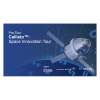 Use this slide deck to activate students’ prior knowledge and preview what they will see on the tour. We recommend allocating 20 minutes to review these slides the day before the tour.Use this slide deck to activate students’ prior knowledge and preview what they will see on the tour. We recommend allocating 20 minutes to review these slides the day before the tour.
Use this slide deck to activate students’ prior knowledge and preview what they will see on the tour. We recommend allocating 20 minutes to review these slides the day before the tour.Use this slide deck to activate students’ prior knowledge and preview what they will see on the tour. We recommend allocating 20 minutes to review these slides the day before the tour. -
 Student WorksheetDistribute graphic organizers for students to capture their biggest learnings and wonderings on the tour.
Student WorksheetDistribute graphic organizers for students to capture their biggest learnings and wonderings on the tour.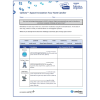 Distribute graphic organizers for students to capture their biggest learnings and wonderings on the tour.Distribute graphic organizers for students to capture their biggest learnings and wonderings on the tour.
Distribute graphic organizers for students to capture their biggest learnings and wonderings on the tour.Distribute graphic organizers for students to capture their biggest learnings and wonderings on the tour. -
 Student Worksheet Answer KeyCheck your students fill-in-the-blank answers on the student worksheet.
Student Worksheet Answer KeyCheck your students fill-in-the-blank answers on the student worksheet.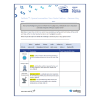 Check your students fill-in-the-blank answers on the student worksheet.Check your students fill-in-the-blank answers on the student worksheet.
Check your students fill-in-the-blank answers on the student worksheet.Check your students fill-in-the-blank answers on the student worksheet. -
 Facilitation GuideUse this step-by-step guide to host a tour and follow the provided script for an easy facilitation experience.
Facilitation GuideUse this step-by-step guide to host a tour and follow the provided script for an easy facilitation experience.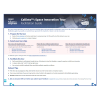 Use this step-by-step guide to host a tour and follow the provided script for an easy facilitation experience.Use this step-by-step guide to host a tour and follow the provided script for an easy facilitation experience.
Use this step-by-step guide to host a tour and follow the provided script for an easy facilitation experience.Use this step-by-step guide to host a tour and follow the provided script for an easy facilitation experience. -
 Key Student LearningsDiscover the key vocabulary and learnings covered on the Callisto: Space Innovation Tour by tour stop.
Key Student LearningsDiscover the key vocabulary and learnings covered on the Callisto: Space Innovation Tour by tour stop. Discover the key vocabulary and learnings covered on the Callisto: Space Innovation Tour by tour stop.Discover the key vocabulary and learnings covered on the Callisto: Space Innovation Tour by tour stop.
Discover the key vocabulary and learnings covered on the Callisto: Space Innovation Tour by tour stop.Discover the key vocabulary and learnings covered on the Callisto: Space Innovation Tour by tour stop. -
 Student CertificatePrint and distribute student certificates to celebrate completing the tour!
Student CertificatePrint and distribute student certificates to celebrate completing the tour!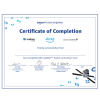 Print and distribute student certificates to celebrate completing the tour!Print and distribute student certificates to celebrate completing the tour!
Print and distribute student certificates to celebrate completing the tour!Print and distribute student certificates to celebrate completing the tour! -
 Discussion QuestionsDive into discussion with your class using any of the discussion questions. A variety of questions at different difficulty levels are provided.
Discussion QuestionsDive into discussion with your class using any of the discussion questions. A variety of questions at different difficulty levels are provided.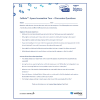 Dive into discussion with your class using any of the discussion questions. A variety of questions at different difficulty levels are provided.Dive into discussion with your class using any of the discussion questions. A variety of questions at different difficulty levels are provided.
Dive into discussion with your class using any of the discussion questions. A variety of questions at different difficulty levels are provided.Dive into discussion with your class using any of the discussion questions. A variety of questions at different difficulty levels are provided.
View the Toolkit
FAQs
What will my class see on the tours?
On the tour, students will learn about Callisto, the special technology experiment that flew on board the Orion spacecraft in NASA’s Artemis I mission. Along the way students learn how we got to space, the science behind deep space communication, new telemetry displays, deep space video communication and whiteboard collaboration, voice artificial intelligence, a radiation experiment, and experience a pre-recorded live demo of the technology in action. Students also get to meet engineers from Amazon Alexa, Lockheed Martin, and Webex by Cisco that made this technology happen!
To learn more, check out the teacher toolkit resources.
To learn more, check out the teacher toolkit resources.
What CSTA standards is the tour aligned to?
Callisto: Space Innovation Tour is aligned to the following CSTA standards:
- 1B-CS-01: Describe how internal and external parts of computing devices function to form a system.
- 1B-NI-04: Model how information is broken down into smaller pieces, transmitted as packets through multiple devices over networks and the Internet, and reassembled at the destination.
- 1B-IC-18: Discuss computing technologies that have changed the world, and express how those technologies influence, and are influenced by, cultural practices.
- 1B-IC-19: Brainstorm ways to improve the accessibility and usability of technology products for the diverse needs and wants of users.
- 2-CS-01: Recommend improvements to the design of computing devices, based on an analysis of how users interact with the devices.
- 2-NI-04: Model the role of protocols in transmitting data across networks and the Internet.
- 2-AP-17: Systematically test and refine programs using a range of test cases.
- 2-IC-20: Compare tradeoffs associated with computing technologies that affect people’s everyday activities and career options.
- 3A-AP-23: Document design decisions using text, graphics, presentations, and/or demonstrations in the development of complex programs.
- 3B-CS-02: Illustrate ways computing systems implement logic, input, and output through hardware components.
- 3B-AP-08: Describe how artificial intelligence drives many software and physical systems.
- 3B-AP-21: Develop and use a series of test cases to verify that a program performs according to its design specifications.
- 3B-IC-25: Evaluate computational artifacts to maximize their beneficial effects and minimize harmful effects on society.
What NGSS Standards is the tour aligned to?
The tour is aligned to the following Next Generation Science Standards (NGSS) disciplinary core ideas, crosscutting concepts, and science and engineering practices:
- 4-PS3-2: Make observations to provide evidence that energy can be transferred from place to place by sound, light, heat, and electric currents.
- 4-PS3-4: Apply scientific ideas to design, test, and refine a device that converts energy from one form to another.
- 3-5-ETS1-1: Define a simple design problem reflecting a need or a want that includes specified criteria for success and constraints on materials, time, or cost.
- 3-5-ETS1-3: Plan and carry out fair tests in which variables are controlled and failure points are considered to identify aspects of a model or prototype that can be improved.
- MS-PS4-3: Integrate qualitative scientific and technical information to support the claim that digitized signals are a more reliable way to encode and transmit information than analog signals.
- MS-ETS1-1: Define the criteria and constraints of a design problem with sufficient precision to ensure a successful solution, taking into account relevant scientific principles and potential impacts on people and the natural environment that may limit possible solutions.
- MS-ETS1-4: Develop a model to generate data for iterative testing and modification of a proposed object, tool, or process such that an optimal design can be achieved.
- HS-PS3-3: Design, build, and refine a device that works within given constraints to convert one form of energy into another form of energy.
- HS-PS4-2: Evaluate questions about the advantages of using a digital transmission and storage of information.
- HS-PS4-5: Communicate technical information about how some technological devices use the principles of wave behavior and wave interactions with matter to transmit and capture information and energy.
- HS-ETS1-3: Evaluate a solution to a complex real-world problem based on prioritized criteria and trade-offs that account for a range of constraints, including cost, safety, reliability, and aesthetics, as well as possible social, cultural, and environmental impacts.
What STEM vocabulary will be covered on the tour?
The following STEM vocabulary will be introduced and explained in real-life context during the tour: voice artificial intelligence (intent, utterance, wake word), payload, latency, codec, telemetry, Deep Space Network, radio waves, bandwidth.
See the Teacher Toolkit to learn more.
See the Teacher Toolkit to learn more.
How long is the tour?
The Callisto: Space Innovation Tour is designed to take 50 minutes (1 class period). The tour is also available in split parts if you do not have 45 minutes available.
What grade levels can attend?
We recommend the tour for any grade 4 and above. The tour includes content accessible to each grade and teachers can use the Teacher Toolkit to adjust learning how they see fit.
If you teach a grade below 4th, please preview the tour to determine fit with your students.
If you teach a grade below 4th, please preview the tour to determine fit with your students.
How much does this cost?
The tour, and all materials included in the accompanying Teacher Toolkit, are provided to teachers at no cost. You do not need a paid Kahoot! account to take the tour - sign up for a free teacher account on Kahoot! or utilize the solo play links on our website to play completely free.
What student data is collected?
We do not collect personal student information on either tour. If a teacher does have a Kahoot! account, they can assign the tour to their students to track their students’ progress, but individuals’ information is not shared with Amazon. During the tour, students will answer poll questions about their intent to pursue careers in STEM and their overall satisfaction with the tour. These questions are multiple choice and do not collect any Personally identifiable information (PII) from students.
Can individual students sign up by themselves, independent of a class?
Yes, absolutely. Students can also play the Kahoot! version of the tour on their own.
Why can't I see the videos when I play the tour in Kahoot! ?
We apologize for the inconvenience. Videos are embedded from YouTube, and if blocked by a firewall, will appear as black screens or not play. If your school has YouTube blocked, please have them whitelist the links to each video in the tour.
Who can I contact for questions?
Please reach out to afe-contact@amazon.com for any questions.
Extension Resources
Get ready for a career that’s out of this world. In this new virtual series, hear experiences from experts in the aerospace field, see behind the scenes how Lockheed Martin develops space innovations, and learn about starting a career in Space.
Extend learning about NASA’s Artemis missions with hands-on activities, videos, books, and more.

